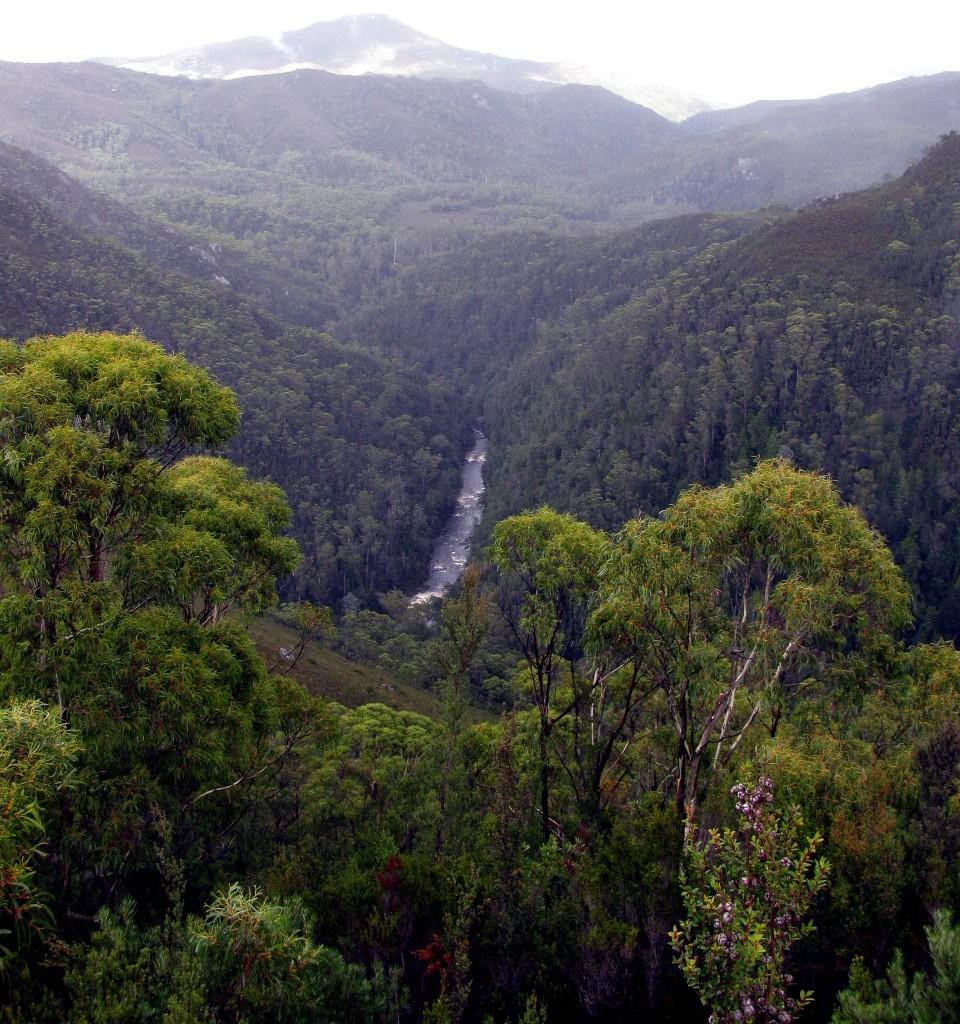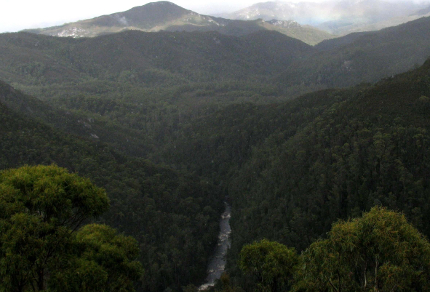During the eight months we’ve lived in Australia, Vilis and I have frequently encountered the word ‘bush’ and various permutations of it. Take for example the devastating Black Saturday bushfires of 2009. Or the ABC’s late morning radio program, Bush Telegraph, which deals with rural issues. When in Victoria in March, Vilis and I drove past the site of the bushranger Ned Kelly’s last stand, and I explained to Vilis that a bushranger is an outlaw, not the ‘park ranger’ I first thought of on reading the term. Sometime in April, I picked up a second-hand book titled The Ultimate Book of Camping and Bushwalking, from which I gleaned all sorts of tips on hiking and learned that experiencing the Aussie outdoors is generally referred to as ‘going bush.’ The book also included tips for obtaining bush tucker, one being pulling witchetty grubs from their bore holes in trees, and then beheading and frying them as a tasty snack. In July, while camping at Undara Volcanic National Park, Vilis and I could have partaken of the lodge restaurant’s bush breakfast (which likely didn’t include witchetty grubs). Last Thursday, I listened to a Bush Telegraph program, during which I heard the terms ‘bushmanship,’ meaning survival in the bush, and ‘youth bush culture’ characterized by utes, boots, jeans, and jerseys.1 Lastly, this evening, while eating the classic Aussie meal of barbied snags and onions on white bread at a small gathering, I first heard the term ‘bushie,’ which is apparently a person not merely going bush, but someone who lives in a close relationship with the bush. (I also picked up the terms ‘plonk,’ meaning to spike with alcohol, and ‘blue light taxi,’ meaning a police car, but those stories have nothing to do with this one.)
It’s obvious that the bush plays a significant role in Australia’s persona, but what exactly is ‘the bush’? Ian G. Read, author of The Bush: A guide to the vegetated landscapes of Australia, describes it this way: “The vegetated landscape, or the Australian bush, on first appearance presents a bewildering display of living matter, a higgledy-piggledy mass of trunks, leaves, branches, shrubs and grasses seemingly without form. The more observant may notice that the higgledy-piggledy mass varies from one place to another, that in some places there are trees as tall as large buildings while in other places there are no trees at all.” 2
“Because of all this confusion the ‘bush’ is often thought of as boring (fear, ignorance?); saltbush plains are uninteresting and dreary, mallee scrubs are tedious and forests block the view. To anyone travelling through the countryside the destination becomes more important than the journey. This need not be the case.” 2
Read goes on to write that learning to recognize dominant vegetation types, be they closed forests or open scrubs and heaths, will pique a traveller’s curiosity about remote and rural landscapes, thus engendering a more-at-home feeling in the wilderness, as well as a view of “the bush as non-threatening, something that need not be feared or destroyed.” 2 The body of his book is lavishly illustrated with photographs of Australian vegetation types – alpine tussock grassland, shrubby woodland, vine-fern closed forest, mangrove low open scrub, fernland, bog heath, and numerous others that make me want to explore every nook and cranny of this continent simply to see the incredible diversity of vegetation with which it’s blessed. Already, Vilis and I have observed some striking vegetation types – the giant swamp gum forests and coastal heaths of Tasmania, the open savannah woodland and wet tropics rainforests of Queensland, the straight-trunked, soaring mountain ash forests of Yarra Ranges National Park in Victoria. And, of course, Vilis and Janis worked in Western Australia’s desert country, with its saltbush plains and Acacia low open woodlands.
Our backpacking excursion on Hinchinbrook Island next week will grant us views of lowland rainforests, beach dune vegetation, she-oak and grass-tree shrubland, tall heath communities, palm swamps, and mangrove forests. A few days after our return, we plan to head for Alice Springs, into the heart of the outback, with its desert plant communities. And then, on what may be our last major excursion before we return to Canada, we’ll drive north from Townsville along the Queensland coast to The Daintree, that world’s-oldest rainforest ecosystem protected within Daintree National Park on Cape York Peninsula. All these are native Australian vegetation types. All these are ‘the bush.’ As Ian G. Read wrote bluntly, “Go and take a look before some mad bugger nukes it out of existence.” 2

View from Donaghy’s Hill Wilderness Lookout in Franklin-Gordon Wild Rivers National Park, Tasmania (© Vilis Nams)
References:
1. ABC Radio National, Bush Telegraph. Roundtable on rural identity (2010). Thursday, August 26, 2010, 11:05 a.m. Accessed 08-Sep-2010. http://www.abc.net.au/rn/bushtelegraph/
2. Ian G. Read. The Bush: A guide to the vegetated landscapes of Australia. 1994. University of New South Wales Press Ltd., Sydney, p 11.


